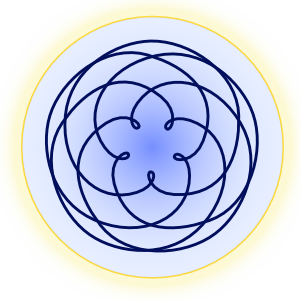The Russian Revolutions of 1917 (Part I)
Part 1: Money Trails and the Secret Influence
Were the Russian Revolutions of 1917 (in February and in October) historical necessities? Were they a result of spontaneous events and an uprising of the Russian people to overthrow the czarist autocracy? They most certainly were not. There were great forces and finances in action with a long-planned aim to overthrow the Czar and impose a communist dictatorship of foreign origin on Russia.
Published May 27, 2021
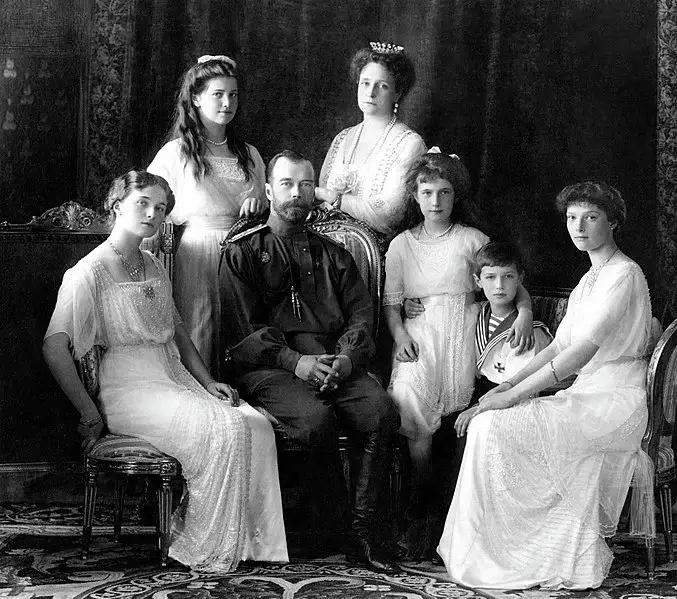
There are many facts and sources that are not included in the conventional history books. Our present human civilization does not have a common clear comprehension of what really happened even in our recent past. Especially regarding such ground-breaking events, which influence the world as a whole. It should be the aim of serious seekers to look for the causes of events as they often lie hidden or are deliberately blurred or dismissed by those, who record history. This presentation is aimed at highlighting some essential facts and events, which are unfortunately missing from mainstream history. May they help us perceive the truth better.
An attempt has sometimes been made to differentiate between the “February Revolution of 1917,” also known as the “Kerensky Revolution,” and the “October Revolution of 1917,” or the definite installation of bolshevism in Russia. Though separate, in time, both these events represent, synthetically, two phases of one and the same historical phenomenon and to distinguish between them demonstrates a tragic and vexing lack of realistic appreciation. It is hoped that this illusion can be dissipated; the oneness and continuity of the revolutionary movement and, especially, the oneness and continuity of the revolution, can never be sufficiently stressed.1
Certain origins of bolshevism
The 1917 revolutions helped bolshevism to seize power in Russia. Bolshevism was an offspring of Marxist communism, which was publicized as a destructive doctrine in the middle of the 19th century. There are certain origins of that idiology, which are less known, but are essential in understanding the events in the 20th century, including the communist coup d’etat in 1917. More details are given in a separate analysis Unveil The Origins of Communism.
It is considered that Karl Marx (together with Friedrich Engels) is the creator of the concept of international communism, as he was given the task to write the manifesto of the Communist League in 1848. But those behind Marx had more significant roles in designing the inhuman doctrine.
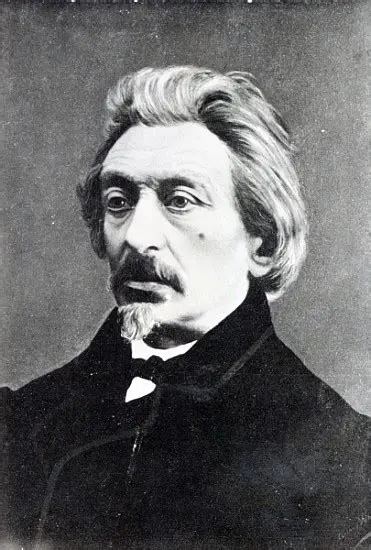
Moritz Moses Hess (1812-1875) is the one, who had considerable influence on both Karl Marx and Friedrich Engels. Hess introduced Engels, the future famous communist, to communism in the early 1840s and also introduced Engels to Marx. Moses Hess has been called a communist rabbi and the father of modern socialism.2 By virtue of his unremitting activity in behalf of revolutionary ideals, he won the title of the “father of German communism”.3
Many of the statements made by the marxists, e.g. in their manifesto, closely resemble also those of Moses Hess. Hess advocated for elimination of matrimonial bondage, replacing the family by the state and educating the young.4 It is suggested that he introduced the idea of abolition of private property, which was later taken over by Marx and Engels and made the cornerstone of communism in the manifesto.5
In 1847 Hess published an essay Die Folgen des Revolution des Proletariat, which contained much (e.g. struggle of the proletariat against an arch enemy with relevant means etc) that was in 1848 formulated into the Communist Manifesto.
Hess also introduced both Marx and Engels to international freemasonry. In 1845, Marx became a member of the Le Socialiste lodge in Brussels.6 Marx and Engels were freemasons of the 31st degree.7
It is notable that the Belgian masonic lodge Le Socialiste, which initiated Marx into freemasonry, formulated a socialist plan for overthrowing ruling regimes. The lodge submitted a draft for such a revolutionary plan of action on July 5, 1843, which was remarkably similar to the Communist Manifesto published five years later, in 1848. Bulletin du Grand Orient (June 1843) stated that this program was accepted by the Belgium’s largest masonic authority, Le Supreme Conseil de Belgique and it was corresponding to the masonic doctrine concerning the social question and that the world which is united in Grand Orient should with all conceivable means aim to realise it.
Historian Nesta Webster has highlighted that the main core of the communist doctrine was formulated by Adam Weishaupt already in 1776, when the secret organisation Illuminati was formed:
In the Communist Manifesto … are set forth the doctrines laid down in the code of Weishaupt8 – the abolition of inheritance, of marriage and the family, of patriotism, of all religion, the institution of the community of women, and the communal education of children by the State. This, divested of its trappings, is the real plan of Marxian Socialism…9
Winston Churchill praised the ability of Mrs Webster for important revelations and claimed that there is a world-wide conspiracy for the overthrow of civilization and for the reconstitution of society on the basis of arrested development, of envious malevolence, and impossible equality – from the days of Spartacus-Weishaupt to those of Karl Marx, and down to Trotsky (in Russia), Bela Kun (in Hungary), Rosa Luxemburg (in Germany), and Emma Goldman (in the United States).10
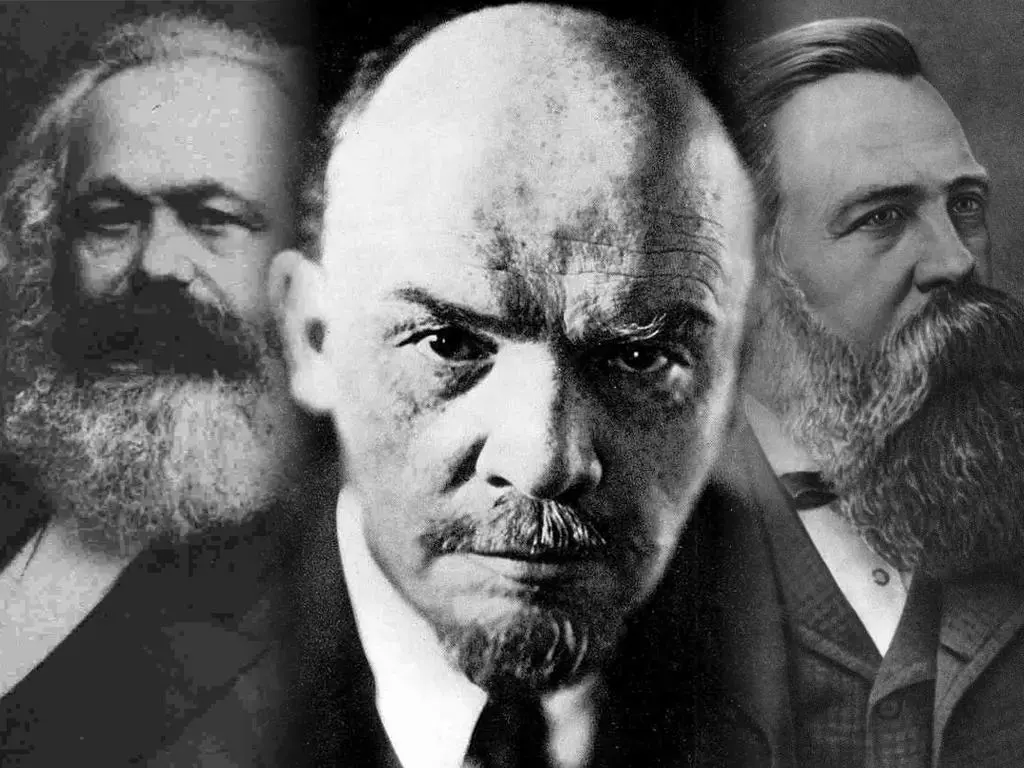
Claims that the Marxist communist doctrine was not correctly “interpreted” by the communist dictators in the 20th century, are unjustified. It is clear from the writings of Marx and Engels that their proposed solution has always been violent revolution, terroristic destruction of societies and dictatorship.
After the failure of the 1848 revolution in Germany, Marx wrote that,
… there is only one way in which the murderous death agonies of the old society and the bloody birth throes of the new society can be shortened, simplified and concentrated, and that way is revolutionary terror.11
In 1849 Marx wrote: We are merciless and do not demand any clemency. When it is our turn, we will not hide our terrorism.12
Together with Engels he spread the idea of revolutionary terrorism as a way to end the traditional society.13 This is also evident from the Communist Manifesto, which ends with a statement:
The Communists … openly declare that their ends can be attained only by the forcible overthrow of all existing social conditions. Let the ruling classes tremble at a communist revolution…
Moreover, from his early years, Marx in a fanatic fashion fixed his gaze on an end goal – destruction of the traditional human society and its nucleus elements (nation, family, private ownership). British historian Paul Johnson concludes that,
Marx’s concept of a Doomsday … was always in Marx’s mind, and as a political economist he worked backwards from it, seeking the evidence that made it inevitable, rather than forward to it, from objectively examined data.14
Marxism was dogma masquerading as science. Pretension to “scientific method” was a mask designed to increase appeal, according to the fashion of the times. Bertrand Russell called bolshevism, an offspring of Marxism, which was helped to take power in Russia, a “religion” and spoke of its habit of militant certainty about objectively doubtful matters.15
Russia before World War I
In order to comprehend better the motives of the 1917 revolutions, we must take a look at the state of affairs in Russia. Before World War I, Russia was a nation well on its way to transforming itself from an agricultural to an industrial nation. In July 1906, the Czar appointed Pjotr Arkadievich Stolypin (1862-1911), a former successful governor of Saratov and then Minister of Interior, as Prime Minister, who proved to be the outstanding statesman of late Imperial Russia.16
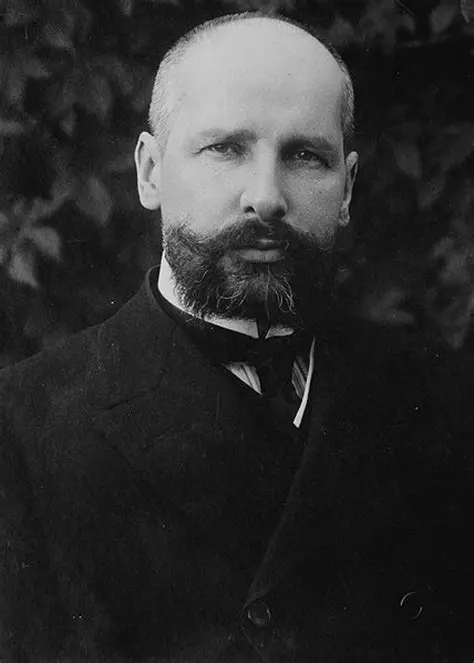
In 1906-1907, Stolypin initiated major long-term agrarian reforms in Russia that granted the right of private land ownership to the peasantry. He managed to lay the basis for a class of more prosperous, independent peasants – the percentage of those who had ownership over their own land rose from 20 percent in 1905 to that of 50 percent in 1915. Russia’s agricultural production increased from 45.9 million tonnes in 1906 to 61.7 million tonnes in 191317, thus showing the economic benefits of Stolypin’s reforms. Agricultural disturbances also decreased significantly. Russia deserved the name “the world’s granary”. In 1913, out of the world’s production, Russia produced 67% of rye, 31% of wheat, 32% of oats and 42% of barley. Between 1909 and 1913 Russian production of these four main cereals was 28% greater than the combined production of Argentina, Canada and the United States. The exports of cereals exceeded the corresponding exports of Argentina by 177%, of Canada by 211% and of the USA by 366%.18
Besides that, Stolypin’s straightforward actions significantly decreased raging revolutionary violence, which was conducted by the socialist and communist terrorists in Russia after the failed 1905 revolution and had thousands of victims – from 1901 to 1917, but overwhelmingly concentrated in the post-1905 years, there were 23000 acts of revolutionary violence which killed or wounded nearly 17000 – mostly innocent bystanders19. Similarily, the number of attempts at political assassination fell during 1909 and 1910.
But Stolypin himself had to pay with his life. He is reputed to have said: I have got the revolution by the throat and I shall strangle it to death … if I live. “If I live” was no idle statement. There had been already ten attempts on his life.20 The eleventh attempt succeeded. On September 14, 1911, revolutionary terrorist Mordechai Gershkovich Bogrov (alias Dmitri Bogrov) mortally wounded Stolypin in the Opera House in Kiev at a gala performance and in the presence of the Czar.
Mainly, Pjotr Stolypin’s reforms and the economic prosperity that accompanied them restored order in Russia. The economy was booming, the village was calm. In 1913, iron production grew by more than 50 percent, compared with 1900, while coal production more than doubled; the nation’s exports and imports doubled as well.21 Russia’s industrial production in 1916 rose to an impressive 34 million tons of coal and almost 5 million tons of steel.22 By 1914, Russia’s industrial production, measured in output of coal, iron, and steel, was fourth in the world, behind only Germany, Britain, and America, having shot past even France, Russia’s key economic partner. In the last six years before World War I, Russian economy grew at an average annual rate of 8.8 percent.23 The decade preceding the war had been one of rapid economic growth.24 Historian Sean Mcmeekin has concluded that even participation in World War I did not bring about any backslide of Russian economy by 1917 – the evidence points instead to a stupendous (if inflationary) wartime boom.25
A French economist forecasted in 1912 that if Russia maintained until the middle of the 20th century the pace of economic growth she had shown since 1900, she would come to dominate Europe politically, economically, and financially.26
Other powers of Europe were beginning to develop respect towards Russia before World War I and at the same time showed increasing concern. Especially concerned were those forces, who had planned to overthrow the Czarist regime for good and made their first major attempts at instigating the so-called 1905 Revolution in Russia.
Money trail from the Western capitalists
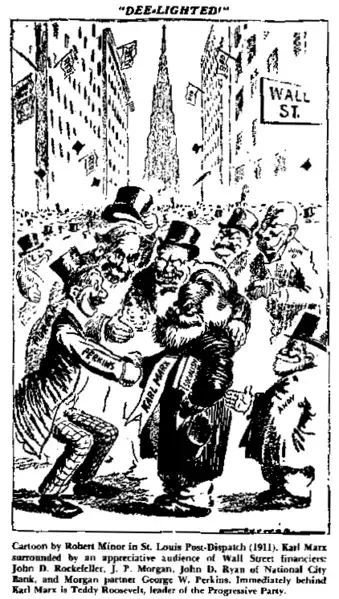
Certain powerful financiers were one axis of those forces, which made concerted efforts to bring down the Czarist regime in Russia. They were the representatives of American and European banking and industrial dynasties, the real capitalists of the Western world. As Dr. Antony Sutton has stated:
There has been a continuing, albeit concealed, alliance between international political capitalists and international revolutionary socialists — to their mutual benefit.27
Historian Richard B. Spence has emphasized that the Russian Revolution, like every revolution, was by nature conspiratorial. It is not possible to organize the overthrow of a regime without conspiracy. Business is no different – a trust is a conspiracy, and so are stock raids and corporate takeovers. Conspiracy is not the exception in human behavior, it is the norm.28
Jacob Schiff (1847-1920) was a Wall Street banker, arms dealer29 and chairman of the Kuhn, Loeb & Co, which had strong affiliations with the Rothschild’s family. Schiff played a key role in providing and coordinating financial backing to the communist revolutionaries in Russia. A number of references of his activities and views against the Russian Czarist regime are contained in a book about him by Cyrus Ader “Jacob Schiff, His Life and Letters” (London, 1929). Schiff called Czarist Russia an enemy of humanity and opposed the Romanovs by all means during several phases, already in the end of the 19th and the beginning of the 20th century.30
Schiff spent millions to overthrow the Czar (in February 1917) and more millions to overthrow Kerensky’s Government (in October 1917).31 Journalist and war correspondent George Kennan revealed in March 1917 that Jacob Schiff had been financing Russian revolutionaries through an organisation, the Society of the Friends of Russian Freedom.32 According to information based on French Intelligence Service, twelve million dollars were reported to have been donated by Schiff to the Russian revolutionaries in the years preceding the war. Schiff openly boasted in spring 1917 that it was thanks to his financial support that the Czarist regime was overthrown in Russia.33 On March 23, 1917, a mass meeting of left-radicals was held at Carnegie Hall, New York, to celebrate the abdication of Czar Nicholas II. Jacob Schiff’s telegram was read to this audience, where he described the successful Russian revolution as … what we had hoped and striven for these long years.34
Jacob Schiff’s great contribution to the communist revolutionaries in Russia was confirmed by Schiff’s grandson John Schiff in 1949, when he estimated that his grandfather sank about 20 million dollars for the final triumph of bolshevism in Russia. Other New York banking firms also contributed.35
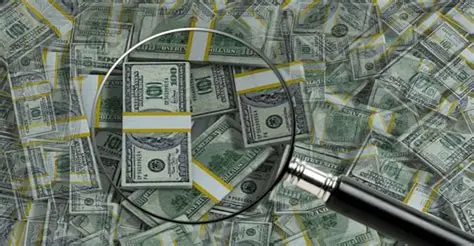
Schiff’s motives were two-fold: primarily, to overthrow the Czar and the Romanov dynasty by all means and secondarily, to earn back from his “investments”. And he did earn back handsomely: according to the late Russian Imperial Ambassador to the United States, Bakhmetiev, the bolsheviks, after victory, transferred 600 million rubles in gold between the years 1918 and 1922 to Jacob Schiff’s company Kuhn, Loeb & Co.36
Certainly, there were more supporters of the revolutions in Russia – the revolutionary communists were also subsidized e.g. by the Warburg dynasty, the Rhine-Westphalian Syndicate and Olof Aschberg of the Nya Banken of Stockholm.37
One of the wealthiest bankers in Germany, Max Warburg and industralist Hugo Stinnes made their contribution to pro-German and anti-government activities in Russia. Hugo Stinnes agreed to give 2 million rubles for the so-called pro-German peace propaganda on August 12, 1916. Max Warburg thought the project was not only plausible, but profitable.38 One of Max’s brothers, Felix Warburg, was married to Jacob Schiff’s daughter, Frieda Schiff. Another of Max’s brothers, Paul Warburg, was married to Solomon Loeb’s (Kuhn, Loeb & Co) daughter, Nina Loeb. Both Paul and Felix Warburg became partners in Kuhn, Loeb & Co.39

A socialist40 from Sweden, Olof Aschberg, also called the “bolshevik banker”, financied the bolsheviks himself and played a key role in providing financial services – Nya Banken and Aschberg were funneling funds from the German government to Russian revolutionaries. They also provided the channel to transfer hundreds of tons of Czarist gold to the West, which the communists looted after the coup d’etat in October 1917. Russia had accumulated Europe’s largest strategic gold reserves by 1914, nearly 1.7 billion rubles ($850 million) worth, or about 1,200 metric tons. This looting of Russia’s wealth by the bolshevik gang has been described in detail by historian Sean Mcmeekin, who has called it the greatest heist in history.41 The Russian gold reserve was sent abroad, and overwhelmingly to Wall Street.42
Dr. Antony Sutton has provided evidence that a continuing working relationship was established between the bolshevik banker Olof Aschberg and the J.P. Morgan-controlled Guaranty Trust Company in New York before, during, and after the Russian Revolution. In Czarist times Aschberg was the Morgan agent in Russia and negotiator for Russian loans in the United States; during 1917 Aschberg was financial intermediary for the revolutionaries; and after the revolution Aschberg became head of Ruskombank, the first Soviet international bank, while Max May, a vice president of the Morgan-controlled Guaranty Trust, became director and chief of the Ruskom-bank foreign department. Also, there is evidence of transfers of funds from Wall Street bankers to international revolutionary activities, e.g. William Boyce Thompson — a director of the Federal Reserve Bank of New York, a large stockholder in the Rockefeller-controlled Chase Bank, and a financial associate of the Guggenheims and the Morgans — contributed at least $1 million to the Red Revolution for propaganda purposes.43 By the way, Rockefeller-controlled National City Bank branch in Petrograd had been exempted from the bolshevik nationalization decree – it was the only foreign or domestic Russian bank to have been so exempted.44
Another financier, Alfred Milner (1854-1925) was a director of the London Joint Stock Bank and from 1916-1918 an influential member (one of four) of the British War Cabinet. He was deemed a power behind the scenes for Prime Minister Lloyd George. Milner was an admirer of Marxist communism: Marx’s great book Das Kapital is at once a monument of reasoning and a storehouse of facts.45 His contribution to the bolshevik revolutionaries was assumed to be over 21 million rubles. This money was used to pay off permanent initiators of revolt in Petrograd. Allegedly such joint decision with Lloyd George to support revolts in Russia dates back to September 1916.46 Milner also led the British delegation on the mission to Petrograd in January 1917, just three weeks before the February revolution was initiated. It has been suggested that during this mission Milner made a demand on the Czar to dismiss his government, otherwise there would be a revolution and the Czar would have to pay with his life. The Czar refused.47 According to a memorandum from the French military delegation, during a mission Milner gave an instruction to British ambassador George Buchanan to support the revolutionaries in the case of initiated unrest, although such instruction was violating the Entente alliance.48 Also, an Irish member of the House of Commons, Laurence Ginnell, stated during a parliamentary debate on March 22, 1917 that Lord Milner was sent to Petrograd in January 1917 to foment the rebellion … foment the revolution, which has dethroned our Imperial Russian Ally, the Czar.49
Unsurprisingly the conventional history books (e.g. A Concise History of the Russian Revolution by Richard Pipes or The Russian Revolution by Sheila Fitzpatrick etc) nor The Black Book of Communism (English edition published by Harvard University in 1999) do not mention the essential role of the financiers of the revolutions, let alone the significant financial supporters as Jacob Schiff, Warburg dynasty, J.P. Morgan, Alfred Milner etc. It is very likely, that without e.g. the financial backing of Jacob Schiff alone – 20 million USD dollars is equivalent to at least 300 million USD nowadays, according to very modest calculations50 – the communists would not have achieved their coup d’etat in Russia in 1917.
German support to the bolsheviks
Besides financial backing from Wall Street, the bolsheviks received support from the German government. Based primarily on archive records, Elizabeth Heresch has conducted extensive research into this collaboration and documented it in her book dating from 2000 – Geheimakte Parvus: Die gekaufte Revolution Biographie. Researcher Z.A.B. Zeman has recorded many important documents in his book Germany and The Revolution in Russia in 1915-1918: Documents from the Archives of the German Foreign Ministry (1958) to show the role of German government in supporting communist revolutionaries in Russia.
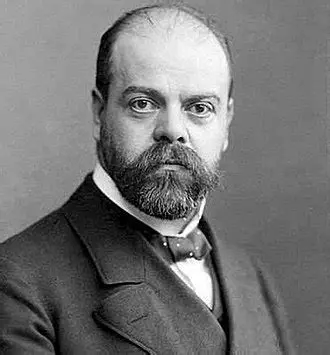
Izrail Lazarevich Helphand (alias Alexander Parvus, 1867-1924) was one of the key persons and a contact between the German government and bolshevik leaders Vladimir Uljanov (alias Lenin) and Leiba Bronstein (alias Lev Trotski). From the spring of 1915 till November 1917, he played the most important part in Germany’s relations with the Russian revolutionary movement.51
Parvus had made up his mind already when he was eigthteen – he wanted to destroy the Czarist state and become rich. He became a Marxist communist and was influenced by such revolutionaries like Karl Kautsky, Leon Deutsch, Vera Sassulits and Rosa Luxemburg. He was one of the organizers of the failed 1905 revolution in Russia. From 1910 he was active in Turkey, where he gained organisational and managerial experience, and wealth with arms smuggling and other schemes.
His secret collaboration with the German government began officially on March 7, 1915, when he presented to the State Secretary of the German Foreign Office, Gottlieb von Jagow a 20-page programme for organizing a systematic revolutionary activity in Russia in order to overthrow the Czar, establish a communist “proletariat” regime and end Russia’s participation in the war. On the same day Jagow asked the Federal Ministry of Finance the initial 2 million marks for “supporting revolutionary propaganda in Russia”, which was soon delivered to Parvus’ different accounts in Copenhagen, Zurich and Bucharest. Parvus used Olof Aschberg’s and Stockholm’s Nya Banken services to deliver money to Russia for revolutionary operations. Parvus received also 4 million marks in Spring, 5 million in July and asked another 20 million Russian rubles in the autumn of 1915.52 Parvus introduced his revolutionary plan, where Lenin was to play a leading role, to Lenin not earlier than May 1915.53 Parvus organized preparations for various revolutionary activities and received support from the German government during 1916 and 1917, e.g. 5 million marks were delivered through him to bolsheviks in March 1917.54
In the beginning of 1917, under Parvus’s influence, the German ambassador wired Berlin:
We must unconditionally seek to create in Russia the greatest possible chaos … We should do all we can … to exacerbate the differences between the moderate and extremist parties, because we have the greatest interest in the latter gaining the upper hand, since the Revolution will then become unavoidable and assume forms that must shatter the stability of the Russian state.*55
Later that year, on December 3, 1917, Richard von Kühlmann, Germany’s Secretary of State for Foreign Affairs reported to the Kaiser Wilhelm II the following:
… It was not until the Bolsheviks had received from us a steady flow of funds through various channels and under varying labels that they were in a position to be able to build up their main organ Pravda, to conduct energetic propaganda and appreciably to extend the originally narrow base of their party… 56
In July 1917, Germany’s ongoing support to the revolutionary communists was brought to broad daylight in Russia. On July 5, Petrograd’s small newspaper The Living Word (Živoe Slovo) published crushing material under the heading Lenin, Ganetski57 & Co – SPIES, which showed how the bolsheviks received German money for their activities in Russia. After that, others started to publish highly revealing information on the bolsheviks as German agents. Chief prosecutor was obliged to initiate a criminal procedure against Lenin, Leiba Rosenfeld (alias Leon Kamenev), Hirsch Apfelbaum (alias Grigori Zinoviev, alias Gerson Radomyslsky), Parvus and others. Some of them were also arrested, but were released by Prime Minister Kerensky already in August 1917. Lenin and Zinoviev escaped to Finland and Parvus to Switzerland.
Initially Lenin denied the accusations of being a German agent, but later he admitted the fact. On October 20th, 1918, at a meeting in Moscow of the Central Executive Committee, the Red dictator made the following statement:
I am frequently accused of having won our revolution with the aid of German money. I have never denied the fact, nor do I do so now. I will add though, that with Russian money we shall stage a similar revolution in Germany.58
Historian Sean Mcmeekin has concluded that it is undeniable that Lenin received German logistical and financial support in 1917, and that his actions, from antiwar agitation in the Russian armies to his request for an unconditional cease-fire, served the interests of Russia’s wartime enemy in Berlin.59
Links through Freemasonry
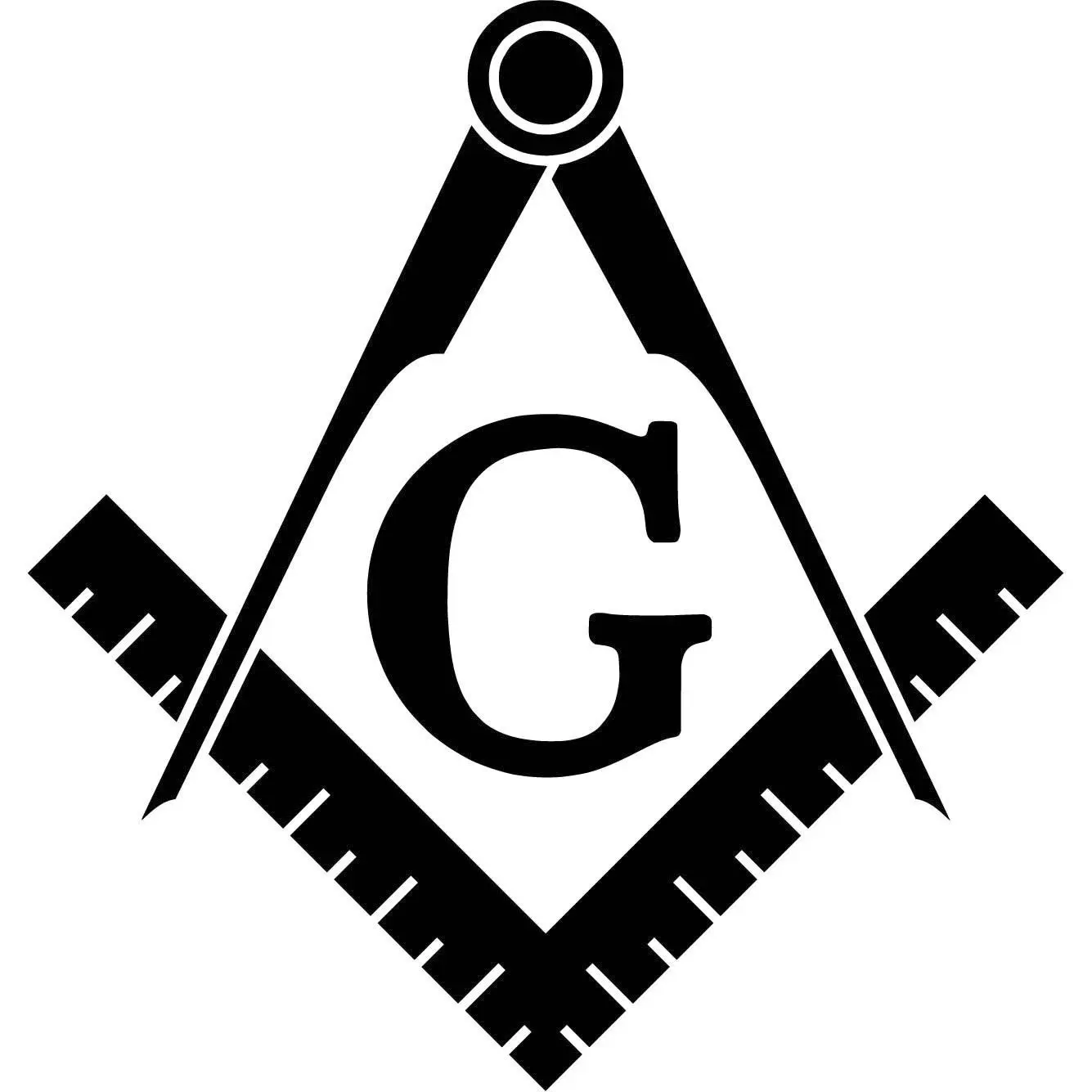 It is notable that a great number of key figures in and around the 1917
Revolutions were involved, most of them highly involved, in
freemasonry. This secret organisation has played an important role in a
number of significant historic events and it is highly likely that a
crucial link for achieving the final result – turning Russia into a
communist dictatorship – was woven together through that international
organisation. Secret documents from Soviet Union’s special archives in
Moscow, which were opened after the collapse of the Soviet Union, reveal
a lot about the masonic activities in Russia.
It is notable that a great number of key figures in and around the 1917
Revolutions were involved, most of them highly involved, in
freemasonry. This secret organisation has played an important role in a
number of significant historic events and it is highly likely that a
crucial link for achieving the final result – turning Russia into a
communist dictatorship – was woven together through that international
organisation. Secret documents from Soviet Union’s special archives in
Moscow, which were opened after the collapse of the Soviet Union, reveal
a lot about the masonic activities in Russia.
For instance already in 1906 the influential French masonic lodge Grand Orient had promised widest possible assistance to the anti-government plans of the Russian revolutionary elements and had promised to support the Russian revolutionaries “in one way or another”.60 The masonic journal Cosmos (nr 29) wrote in 1906 the following: The spirit of our time demands that we take over the leadership of socialism, and some lodges have found the right ways and means to achieve this goal.61 According to the minutes of the Grand Lodge of Germany dating 1917, the freemasons concluded: In fact, anarchist and revolutionary Lenin represents consistently the political ideals of international freemasonry.62
All of the members of the Provisional Government, which was led by Prince Georgi Lvov and was formed after the forced abdication of Czar Nicholas II on March 2, 1917, were freemasons.63 Special archive documents reveal that also many high-ranking communists were members of various masonic lodges, e.g.:
Vladimir Uljanov (alias Lenin), Leiba Bronstein (alias Leon Trotsky), Hirsch Apfelbaum (alias Grigori Zinoviev, alias Gerson Radomyslsky), Leiba Rosenfeld (alias Leon Kamenev), Tobias Sobelsohn (alias Karl Radek), Meyer Wallakh (alias Maksim Litvinov), Yankel-Aaron Solomon (alias Yakov Sverdlov), Julius Zederbaum (alias L. Martov or Julius Martov) etc.
This has been thoroughly investigated by researcher Dr. Oleg Platonov,64 also by Nikolai Svitkov,65 Juri K. Begunov66, Viktor Ostretsov and others.
The notable key figures of the 1917 revolutions were:
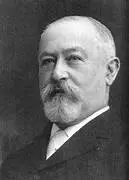
- Jacob Schiff
- Member of the Jewish masonic order B’nai B’rith67, which was founded by twelve men on Oct 13, 1843, in New York City. Most of them were freemasons and oddfellows.68
Historian Viktor Ostretsov has revealed that the main bolsheviks – Uljanov-Lenin, Apfelbaum-Zinoviev, Solomon-Sverdlov, Sobelsohn-Radek, Rosenfeld-Kamenev and Bronstein-Trotsky belonged also to B’nai B’rith.69
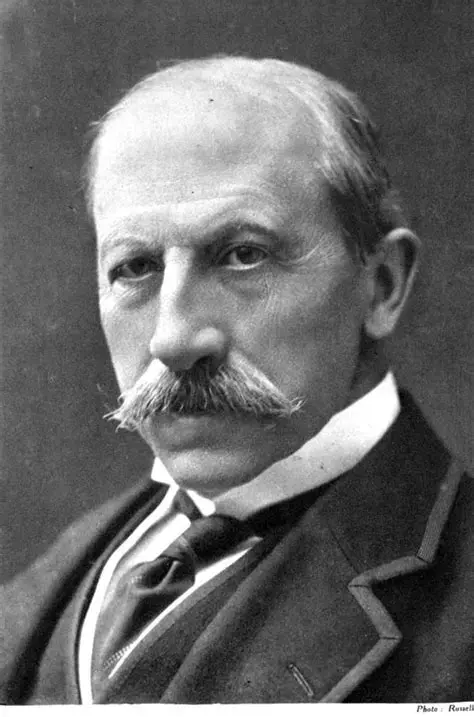
- Alfred Milner
- Head of the Round Table Group (formerly called “Association of Helpers”), which was an outer circle of a secret society, called a “Circle of Initiates”. This was formally established on February 5, 1891 by an associate of Rothschild and a wealthy industrialist Cecil Rhodes and had as members Brett Stead (Lord Esher), Lord Arthur Balfour, Sir Harry Johnston, Lord Rothschild, Lord Albert Grey and Alfred Milner.70
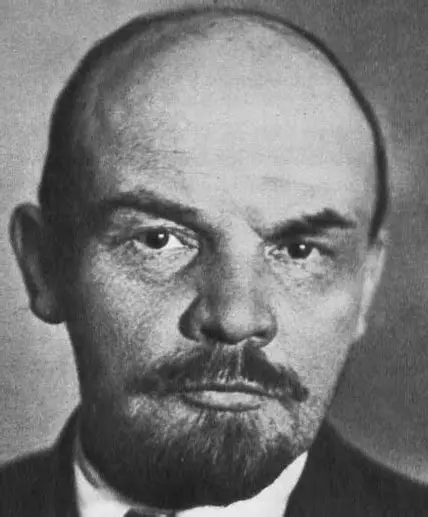
- Vladimir Ilich Uljanov (alias Lenin)
- Several sources describe his various masonic activities71, e.g. according to researcher Juri K. Begunov, he was a member of Art et Travail in France, where he attained the 31st degree72. According to Nikolai Svitkov, Lenin was initiated into freemasonry as early as 1908.73 Also, he became a member of a masonic order B’nai B’rith.74

- Leiba Bronstein (alias Lev Trotsky)
- He wrote in his memoirs “My Life” that he studied freemasonry thoroughly for several months, filled an exercise-book with thousand numbered pages with his notes on the subject. Also that
…In the 18th century, freemasonry became expressive of a militant policy of enlightenment, as in the case of the Illuminati, who were the forerunners of revolution; on its left, it culminated in the
Bronstein was initiated into freemasonry75 and was a member of French lodge Art et Travail.76 He reached at least the 32nd degree in it, as he belonged to the Shriner Lodge, which comprised only of 32nd degree freemasons.77 In January 1917 Bronstein also became the member of a masonic order B’nai B’rith.78
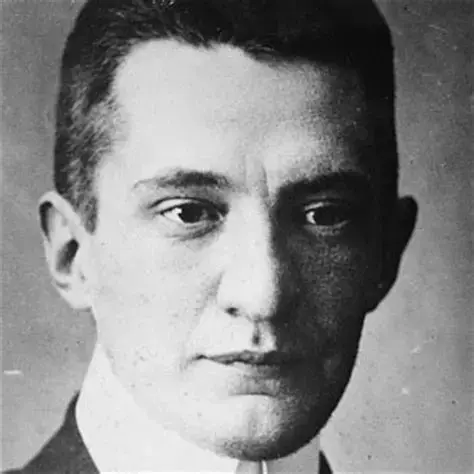
- Aaron Kürbis (alias Alexander Kerensky)
- Became a freemason in 1912. He was a member of the lodge Grand Orient in Paris, France.79 He was a member of the Supreme Council of Russian Freemasonry.80 Kerensky acted as the General Secretary of the Supreme Council of the Grand Orient (Veliky Vostok) in Russia in 1916.81 He was a member of the Shriner Lodge, which comprised only of 32nd degree freemasons.82
- Izrail Lazarevich Helphand (alias Aleksander Parvus)
- A freemason according to several sources.83
(Continues as Unveil the Russian Revolutions of 1917, Part 2)
Arsene de Goulevitch Czarism and the Revolution (1962), p 226 ↩︎
Jüdische Lexicon (Berlin, 1928), pp 1577-1578 ↩︎
Sydney Hook Karl Marx and Moses Hess in New International, Vol 1 Nr 5 (1934) ↩︎
Moses Hess The Holy History of Mankind and Other Writings, p 87 ↩︎
Juri Lina Under the Sign of the Scorpion (2014), p 100 ↩︎
Ibid, pp 108-109 ↩︎
Vladimir Istarkhov The Battle of the Russian Gods (2000), p 154 ↩︎
Adam Weishaupt (1748-1830), the founder of the secret society Illuminati, which was established on the 1st of May, 1776 in Ingolstadt, Bavaria ↩︎
Nesta Webster World Revolution (1921), p 169 ↩︎
Rt. Hon. Winston S. Churchill Zionism versus Bolshevism, published in Illustrated Sunday Herald, February 8, 1920, page 5 ↩︎
“Neue Rheinische Zeitung” (nr 136), November 6, 1848 ↩︎
Arnold Kunzli Karl Marx: Eine Psychographie (1966) ↩︎
Marx and Engels Works, volume 5, p 494 ↩︎
Paul Johnson Intellectuals: From Marx and Tolstoy to Sartre and Chomsky (1990), 162/1069 (epub) ↩︎
Richard Pipes Communism. A History (2001), 22/300 (epub) ↩︎
Richard Pipes A Concise History of the Russian Revolution (1996), p 47 ↩︎
D. Murphy Russia in Revolution 1881-1924: From Autocracy to Dictatorship (2008), p 39 ↩︎
From The Bulletin of the International Institute of Agriculture in Rome, November 1914 ↩︎
Anna Geifman Death Orders: The Vanguard of Modern Terrorism in Revolutionary Russia (2010), p 15 ↩︎
Arsene de Goulevitch Czarism and the Revolution (1962), p 228 ↩︎
Richard Pipes A Concise History of the Russian Revolution (1996), p 54 ↩︎
Elisabeth Heresch Blood on the Snow (1990), p ix-x ↩︎
Sean Mcmeekin History’s Greatest Heist: The Looting of Russia by the Bolsheviks (2009), pp xvi-xvii ↩︎
Mikhail Heller, Aleksandr M. Nekrich Utopia in Power: The History of the Soviet Union from 1917 to the Present (1986), p 15 ↩︎
Sean Mcmeekin The Russian Revolution (2017), Introduction, 22/1026 (epub) ↩︎
Richard Pipes A Concise History of the Russian Revolution (1996), p 54 ↩︎
Antony Sutton Wall Street and The Bolshevik Revolution (1981), p 8 ↩︎
Richard B. Spence Wall Street and the Russian Revolution: 1905-1925 (2017), introduction ↩︎
Elisabeth Heresch Geheimakte Parvus: Die gekaufte Revolution Biographie (2000), Russian ed., 8/665 (epub) ↩︎
Ibid, 53/665; 206/665 (epub) ↩︎
Gary Allen, Larry Abraham None Dare Call It Conspiracy (1976), p 43 ↩︎
George Kennan Pacifists Pester Till Mayor Calls Them Traitors in The New York Times, March 24, 1917 ↩︎
Arsene de Goulevitch Czarism and the Revolution (1962), p 225 ↩︎
G. Edward Griffin The Creature from Jekyll Island (1998), p 264-265; The New York Times, March 24, 1917, p 2 ↩︎
In the edition of The New York Journal-American,** February 3, 1949 ↩︎
Arsene de Goulevitch Czarism and the Revolution (1962), p 225 ↩︎
General Alexander Nechvolodov The Emperor Nicholas II and the Jews (Paris, 1924), pp. 97-104 ↩︎
Z.A.B. Zeman Germany and the Revolution in Russia, 1915-1918: Documents from the Archives of the German Foreign Ministry (1958), p 92 ↩︎
Gary Allen, Larry Abraham None Dare Call It Conspiracy (1976), p 26 (pdf) ↩︎
Richard B. Spence Wall Street and the Russian Revolution: 1905-1925 (2017), chapter 6, (296/706 epub) ↩︎
Sean Mcmeekin History’s Greatest Heist: The Looting of Russia by the Bolsheviks (2009) ↩︎
Richard B. Spence Wall Street and the Russian Revolution: 1905-1925 (2017), chapter 10, (562/706 epub) ↩︎
Antony Sutton Wall Street and The Bolshevik Revolution (1981), p 133 ↩︎
Ibid., p 60 ↩︎
Antony Sutton Wall Street and The Bolshevik Revolution (1981), p 64 ↩︎
Arsene de Goulevitch Czarism and the Revolution (1962), p 230; Elizabeth Heresch Geheimakte Parvus: Die gekaufte Revolution Biographie (2000), Russian ed., 316/665 (epub) ↩︎
Juri Lina Under the Sign of the Scorpion (2014), p 259 ↩︎
Elizabeth Heresch Geheimakte Parvus: Die gekaufte Revolution Biographie (2000), Russian ed., 408/665 (epub) ↩︎
Parliamentary Debates. House of Commons March 22, 1917, Vol 91, Col 2093 ↩︎
Historian Sean Mcmeekin considers figure of 100 to 1 for converting dollar figures of 1917–1922 to current suggested values – in History’s Greatest Heist: The Looting of Russia by the Bolsheviks (2009): A Note on the Relative Value of Money Then and Now ↩︎
Z.A.B. Zeman Germany and the Revolution in Russia, 1915-1918: Documents from the Archives of the German Foreign Ministry (1958), p viii ↩︎
Elizabeth Heresch Geheimakte Parvus: Die gekaufte Revolution Biographie (2000), Russian ed., 352/665 (epub) ↩︎
Ibid, 228/665 (epub) ↩︎
Ibid, 458/665 (epub) ↩︎
Richard Pipes A Concise History of the Russian Revolution (1996), p 116 ↩︎
Z.A.B. Zeman Germany and the Revolution in Russia, 1915-1918: Documents from the Archives of the German Foreign Ministry (1958), p 94 ↩︎
Jakub Fürstenberg (alias Yakov Ganetsky) was one of the closest associates to Lenin, served as a contact person between Lenin and Parvus and provided several other services to Lenin ↩︎
A.I. Spiridovitch "History of Bolshevism in Russia", Russian ed., p 226↩︎
Sean Mcmeekin Was Lenin a German Agent? in *The New York Times *(June 19, 2017) ↩︎
Oleg Platonov The Secret History of Freemasonry (2000), Russian ed., p 130 (pdf) ↩︎
Viktor Ostretsov Freemasonry, Culture and Russian History (1999), Russian ed., 1478/1863 (epub) ↩︎
Moscow Special Archive, fund 1412-1-9064 and 815; Viktor Ostretsov Freemasonry, Culture and Russian History (1999), Russian ed., p 585 or 1478/1863 (epub)* ↩︎
Oleg Platonov Criminal history of freemasonry 1731-2004 (1995), Russian ed., chapter 19; Also Sean Mcmeekin The Russian Revolution (2017), chapter 4, (epub 191/1026) ↩︎
In his book The Secret History of Freemasonry (2000), Russian ed. ↩︎
Nikolai Svitkov Freemasonry amongst Russian emigrates (1966), Russian ed. ↩︎
Juri K. Begunov Tajnye Sily w Istorii Rossij (Secret Forces in the History of Russia) (1996) ↩︎
Viktor Ostretsov Freemasonry, Culture and Russian History (1999), 1562/1863 (epub) ↩︎
Schmidt, Greenwood Encyclopaedia of American Institutional Fraternal Organizations (1980), p 52 ↩︎
Viktor Ostretsov Freemasonry, Culture and Russian History (1999), pp 582-583, 1471/1863 (epub) ↩︎
Prof Carroll Quigley Tragedy and Hope. A History of the World in Our Time (1966), p 131 ↩︎
Richard B. Spence What Role did Freemasons and Bolsheviks play in the Russian Revolution? (July 9, 2020): ↩︎
Oleg Platonov The Secret History of Freemasonry (2000), Russian ed., p 285 (rtf) ↩︎
Nikolai Svitkov Freemasonry amongst Russian emigrates (1966), Russian ed. ↩︎
Viktor Ostretsov Freemasonry, Culture and Russian History (1999), pp 582-583 ↩︎
Richard B. Spence What Role did Freemasons and Bolsheviks play in the Russian Revolution? (July 9, 2020), Oleg Platonov The Secret History of Freemasonry (2000), Russian ed., p 302 (rtf) ↩︎
L.Hass Freemasonry in Central and Eastern Europe (1982) ↩︎
Prof Johan von Leers The Power behind the President (1941), p 148 ↩︎
Juri K. Begunov Tajnye Sily w Istorii Rossij ("Secret Forces in the History of Russia*) (1996), pp 138-139 ↩︎
Oleg Platonov The Secret History of Freemasonry (2000), Russian ed., chapter 8, p 141 (rtf) ↩︎
Oleg Platonov Criminal history of freemasonry 1731-2004 (1995), Russian ed., p 43 (pdf) ↩︎
Viktor Brachev The Victorious February 1917: The Masonic Trail (2007), Russian ed., p 134 ↩︎
Prof Johan von Leers The Power behind the President (1941), p 148 ↩︎
Oleg Platonov Criminal history of freemasonry 1731-2004 (1995), Russian ed., p 42 (pdf); Nikolai Svitkov Freemasonry amongst Russian emigrates (1966), Russian ed. ↩︎
